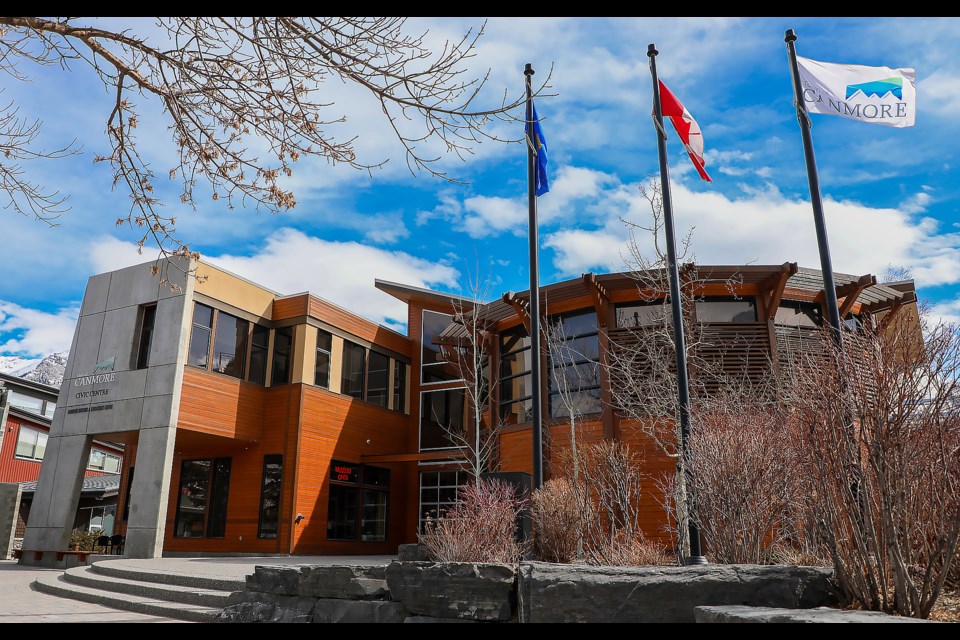CANMORE – The Town of Canmore has appointed members of a task force charged with addressing livability in the community and making a critical dent in its housing woes.
Applicants put their names forward to form the Town’s livability tax policy task force, which has changed to the name livability task force, with the goal of developing a plan to remove the tourist home designation and explore tax options to incentivize purpose-built rental accommodation and long-term use of residences.
“I think these are all excellent representatives that will really add to the discussions and contribute well to the outcomes of the livability task force, and I support them wholeheartedly,” said Mayor Sean Krausert of the public members appointed during a brief special council meeting Sept. 19.
After a 15-minute in-camera session, council selected Rachel Ludwig, CEO of Tourism Canmore Kananaskis; Frank Kernick, a local developer of tourist homes; Dan Sparks, representing the Canmore real-estate industry; Darren Potter, representing a Canmore residential property management company; Charla Tomlinson, representing a Canmore short-term rental property management company, and Lisa de Soto, a board member of Canmore Community Housing.
They join Krausert and Couns. Wade Graham and Joanna McCallum, who were selected to represent council.
The task force’s terms of reference, approved on Sept. 5, involve engaging with stakeholders to advance goals from the Town’s Housing Action Plan.
“For clarification, this task force’s work is focused on livability and positively impacting Canmore’s housing crisis. It does not have the same focus as the 2013 property tax task force,” reads a staff report. “While some of the task force’s recommendations may include changes to property tax, that is not this task force’s purpose.”
It was recommended the name be changed from livability tax policy task force to livability task force to prevent confusion between the groups’ work. While the livability task force will work on issues related to tax policies, including tax rates, their work may also involve assessing how tax policies impact the quality of life for residents, for example.
Therese Rogers, the Town’s general manager of corporate services, noted the distinction is important because the municipality has future plans for its property tax task force.
“There seems to be some confusion including in an article headline suggesting this task force is a reincarnation of the property tax task force from 2013; they are in fact separate pieces of work and we do have a plan in 2024 to restart the property tax task force,” she said. “So, we thought it was important to make sure it’s clear for the public to know that these are currently two separate processes.”
Key objectives for eliminating the tourist home designation involve reviewing its definition, historical development of tourist homes, distinguishing it from visitor accommodation, and confirming the need to phase it out due to the displacement of full-time residents and impact on housing availability.
In the past, there have been roughly 600 tourist homes in Canmore, with slightly more than 100 declared for personal use.
The Smith Creek and Three Sisters Village area structure plans, approved by the Land and Property Rights Tribunal (LPRT), could potentially include 900 to 1,300 tourist homes. Some LPRT decisions are under Court of Appeal review, with a decision expected this fall.
In August, the Town applied for the federal Housing Accelerator Fund after receiving council approval in June. A funding update from the Canada Mortgage and Housing Corporation is also expected this fall, but council maintains the flexibility to act on the task force’s recommendations, as noted by Town staff.
The task force’s terms of reference also focus on exploring tax options, specifically, “[investigating] options that would create a surcharge for vacant or under-occupied properties,” and “[preparing] policy options, recommendations and implications.”
This includes looking at “tax rates, [the] definition of vacant/under-occupied property, tax base/exemptions, tax equity/fairness, potential revenue, impact on rental market (and housing market more generally), administrative burden, enforcement [and] phase-in.”
Other objectives include assessing land supply and land use changes for the application of incentivizing purpose built rental accommodations.
Ludwig said she hopes the task force will be able to find a balanced approach that benefits the entire community.
“Addressing housing affordability while considering overall business resilience, beyond just accommodations, is crucial. I look forward to engaging in discussions that will shape Canmore's future and ideally bring positive changes for both current and future residents,” she said.
Planned for 2024, after the livability task force’s work is complete, is an update to the work done by the original property tax task force.
According to a staff report, the update will involve revising the 2013 report, comparing the Town’s property tax status to neighbouring communities and competitors, and formulating new policy statements and recommendations.
The livability task force is expected to have its first meeting between September and October, meeting after as required until December.
The Local Journalism Initiative is funded by the Government of Canada. The position covers Îyârhe (Stoney) Nakoda First Nation and Kananaskis Country.




